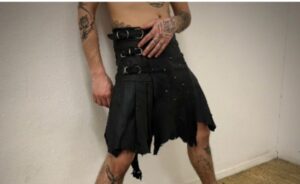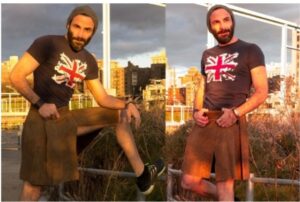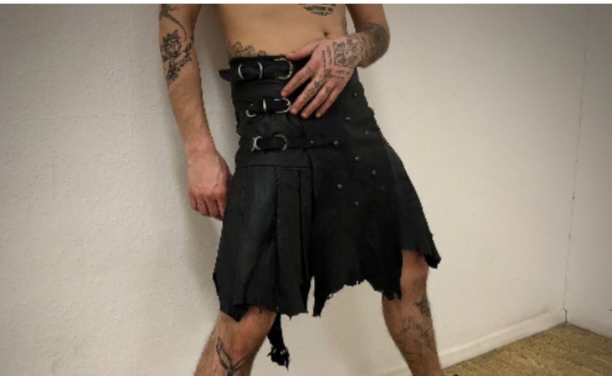The Viking kilt, a distinctive and bold garment that encapsulates the spirit of the Norse warriors, stands as a unique fusion of historical tradition and contemporary style. Contrary to the commonly associated image of Vikings in horned helmets, the Viking kilt offers a fresh perspective on Norse culture, highlighting their practical yet fashion-forward approach to clothing. This modern interpretation draws inspiration from historical Norse attire, combining elements of functionality and flair. Embracing the rugged aesthetic of the Viking age, the Viking kilt serves as a symbolic homage to the seafaring warriors of old while seamlessly integrating into the fashion landscape of today. As we delve into the intricacies of this distinctive garment, we uncover a fascinating intersection of history, culture, and sartorial innovation.

The Viking kilt presents a myriad of benefits for those seeking a distinctive and versatile wardrobe choice. Crafted with a keen focus on comfort, durability, and style, this unique garment seamlessly blends historical charm with contemporary fashion sensibilities. The breathable and flexible fabric ensures comfort during various activities, making it an ideal choice for both casual wear and themed events. Additionally, the Viking kilt celebrates individuality by offering a break from conventional attire, allowing wearers to express their personality and showcase a connection to Norse heritage. Its adjustable design accommodates different body shapes, providing a flattering fit for a wide range of individuals. Beyond its aesthetic appeal, the Viking kilt sparks conversations about history and cultural diversity, adding an educational dimension to its wearer’s attire. In essence, donning a Viking kilt not only elevates one’s style but also fosters a sense of authenticity, comfort, and cultural appreciation.
Historical Roots of Viking Leather Kilts
To comprehend the historical roots of Viking leather kilts, one must embark on a journey through archaeological findings and textual evidence. Excavations in burial sites and settlements have unearthed well-preserved textile fragments that offer invaluable insights into Viking clothing. These artifacts, ranging from simple tunics to intricate leather garments, provide a tangible connection to the past. Runestones, with their carvings depicting scenes from daily life, also contribute to our understanding of Viking attire. The use of vivid colors and distinctive patterns in these depictions hints at the variety and richness of Viking clothing, setting the stage for a closer examination of leather kilts.
When it comes to the materials and techniques used in crafting Viking leather kilts, a meticulous study of archaeological specimens unveils the mastery of Viking artisans. Leather, sourced from domesticated animals, was a practical choice due to its durability and availability. The tanning process, using natural elements like tree bark, transformed raw hides into a supple and resilient material. Viking craftsmen employed techniques such as stitching, riveting, and lacing to construct these kilts. The combination of robust materials and skilled craftsmanship ensured that leather kilts could withstand the rigors of Viking life, from the harsh weather of the North to the demands of battle.
Evolution of Viking Leather Kilts
The evolution of Viking leather kilts over time offers a fascinating glimpse into the adaptive nature of Norse culture. As the Viking Age progressed, external influences, technological advancements, and shifts in societal norms contributed to changes in the design and significance of leather kilts. Early Viking leather kilts, with their simple yet effective designs, gave way to more elaborate and ornate styles as the Norse people encountered new cultures and expanded their trade routes.
Changes in materials also played a role in the evolution of these garments. While leather remained a staple, the availability of new fabrics through trade and exploration influenced the diversity of Viking attire. The evolution of Viking leather kilts mirrored the ever-changing landscape of the Viking Age, adapting to the needs and influences of each era while retaining a core identity rooted in Norse traditions.
Design and Construction
The design of Viking leather kilts reflects not only the functional needs of the wearer but also the artistic sensibilities of the craftsmen. Geometric patterns, often seen in runic carvings and other artistic expressions of the time, were frequently incorporated into the design of leather kilts. These patterns served both aesthetic and practical purposes, providing a visually appealing aspect to the garment while also allowing for efficient use of materials. The choice of colors, derived from natural dyes, further added to the visual impact of the leather kilts, with each hue carrying its own symbolic significance.
The construction of Viking leather kilts was a labor-intensive process that required a range of specialized tools. The use of awls, needles, and bone tools allowed for precise cutting and stitching, while metal rivets and buckles provided additional reinforcement. Viking craftsmen also employed tooling techniques to create intricate designs on the surface of the leather. These designs ranged from simple embellishments to elaborate depictions of Norse mythology and daily life. The combination of skilled hands and specialized tools resulted in leather kilts that were not only functional but also true works of art.
Symbolism and Meaning
Viking leather kilts were more than mere clothing—they were powerful symbols embedded with cultural and social meanings. The choice of specific symbols and motifs on these kilts often conveyed the wearer’s allegiance to a particular clan or family. In some instances, these symbols served as protective charms, believed to bring luck and ward off harm in the tumultuous world of the Vikings. Colors also played a crucial role in symbolizing social status or specific roles within Viking society. Through a careful analysis of these symbolic elements, we gain a deeper understanding of the intricate web of meanings woven into the fabric of Viking leather kilts.
Cultural and social connotations associated with leather kilts extended beyond the individual wearer. The crafting and donning of these garments were communal activities, reinforcing the bonds within Viking communities. Leather kilts became markers of identity, linking individuals to their heritage and shared values. The intricate symbolism woven into each kilt served not only as a personal statement but also as a visual language that communicated a collective identity, fostering a sense of unity among the Norse people.
Functionality in Battle
As formidable warriors, Vikings understood the importance of practicality in their attire, especially on the battlefield. The functionality of leather kilts in battle was multi-faceted. Their construction allowed for ease of movement, a critical advantage in the unpredictable and dynamic nature of Viking combat. The lightweight yet durable nature of leather provided protection against the elements without compromising agility.
Moreover, leather kilts offered a strategic layer of defense against slashing weapons. The flexibility of leather allowed warriors to evade attacks more efficiently than rigid armor, while still providing a level of protection against cuts and abrasions. The adaptability of leather kilts to various weather conditions, from the biting cold of Nordic winters to the milder temperatures of summer raids, underscored their practicality as versatile garments for Viking warriors. As such, these kilts were not only symbols of identity but also crucial components of the Viking warrior’s arsenal.
Mens Leather Kilt | A Modern Take on Viking Fashion

The Mens Leather Kilt represents a contemporary interpretation of Viking fashion, seamlessly merging the rugged allure of Norse heritage with modern style. This distinctive garment combines the timeless appeal of traditional kilts with the edgy sophistication of leather, creating a unique and versatile wardrobe piece. The use of high-quality leather not only enhances the kilt’s durability but also adds a touch of boldness, making it suitable for various occasions. Embracing the ethos of Viking warriors, this modern take on the kilt exudes confidence and individuality. The carefully crafted design ensures both comfort and mobility, allowing the wearer to embody the spirit of adventure while maintaining a fashionable edge. As a symbol of cultural fusion, the Men’s Leather Kilt is not just an article of clothing but a statement piece that pays homage to the past while confidently striding into the present.
Artistic Embellishments
The artistic embellishments on Viking leather kilts were a testament to the skilled hands and creative minds of Norse craftsmen. Animal motifs, intricate knotwork, and representations of mythical creatures adorned the surface of these garments. Each embellishment held its own significance, whether honoring a deity, invoking protective spirits, or celebrating the natural world. The use of tooling techniques allowed for a depth of detail, creating visually stunning and tactile designs that elevated the leather kilt from a functional garment to a wearable masterpiece.
The aesthetic choices made by Viking craftsmen in embellishing leather kilts were not arbitrary; they were deeply rooted in Norse mythology and cultural beliefs. The intricate interplay of symbols on these garments served as a visual narrative, telling stories of heroism, conquests, and the interconnectedness of the Viking world. The combination of functionality and artistic expression in leather kilts reflected the holistic approach of the Norse people, who saw no division between the practical and the aesthetic.
Conclusion
In conclusion, the exploration of Viking leather kilts reveals a fascinating tapestry of history, artistry, and cultural significance. From their historical roots and intricate design elements to their symbolic meanings, battlefield functionality, and artistic embellishments, these garments stand as remarkable artifacts of Norse civilization. The evolution of Viking leather kilts over time reflects the dynamic nature of Viking culture, showcasing a people who embraced change while preserving their heritage.
As we reflect on the legacy of Viking leather kilts, it becomes clear that these garments were more than utilitarian items; they were expressions of identity, craftsmanship, and the indomitable spirit of the Norse people. In the annals of history, the artistry and cultural importance of Viking leather kilts endure as a testament to the enduring legacy of a civilization that thrived in the face of challenges, leaving an indelible mark on the world.
